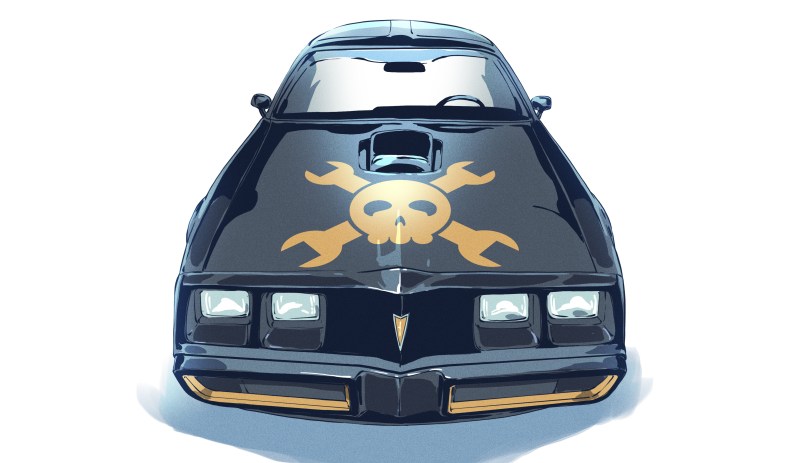
Typically, when it comes to inclement weather, ice is the worst of the worst of driving conditions. Regular tyres have little to no grip in such situations, and accidents are common. However, some choose to laugh at such challenges, and take to racing out on frozen lakes and rivers. The sport of ice racing can be a demanding one, though, so you’ll need to prep your car appropriately. Here’s how.
Ice, Ice, Baby
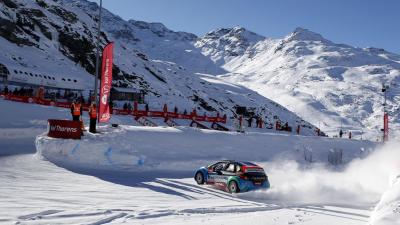
Ice racing is largely limited to colder climates where lakes, rivers, or even actual racetracks freeze over in the winter. While some limited ice racing does occur indoors on skating rinks, it’s largely limited to motorcycles and ATVs because such facilities are just too small for cars.
The weather-dependent and esoteric nature of ice racing means that it exists at the fringes of organised motorsport, with most events being community-run at the grassroots level. Often, new competitors will start in a “run-what-you-brung” class, with unmodified street cars competing in limited or no-contact events, such as time trials or drag races. Higher tiers then generally necessitate more serious preparation and safety equipment, such as rollcages and fire extinguishers, and competitive door-to-door racing on larger tracks. However, some professional competitions do exist, running bespoke tube-framed cars built for purpose. The most notable of these is the Andros Trophy, held in the French Alps and run by the namesake jam company.
Tyres
Ice is slippery, which is both what makes ice racing so challenging and also so incredibly fun. Keeping the car pointing in the right direction, or, conversely, sliding it in the right way around the corners, is the name of the game here. To best achieve this, you’ll want tyres that can provide grip in these conditions.
For entry level racers in street vehicles, a studless snow tyre is a popular choice, such as the Bridgestone Blizzak. These tyres come in a variety of sizes, and were designed in Japan in the 1990s to deal with snowy conditions without causing excessive road wear. Special rubber compounds are used that remain pliable at low temperatures, rather than becoming stiff and hard like summer tyres. Tread patterns are designed to dig into and compact the snow, while many small grooves, called sipes, are cut into the tyres to add more edges that can dig into ice for added traction. Dedicated snow tyres have seen much development over recent decades, and have come a long way in that time.
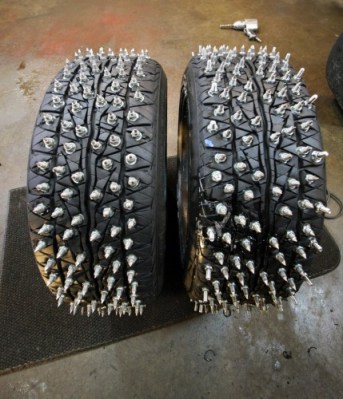
However, for serious players, studded tyres remain the gold standard. Unlike studded tyres for road use, however, tyres are often custom builds, studded by hand with vicious spikes well over 5 mm or 10 mm in length. Often, off-the-shelf snow tyres are modified by drilling holes and installing screws or bolts through the tread, followed by a layer of tyre sealant to ensure the resulting assembly can hold air. More serious racers will use hardened steel studs specially crafted for the purpose. Regardless of the exact design, aggressive studded tyres will make a huge difference in performance, sticking into the ice surface and pulling the car forwards, greatly reducing the likelihood of wheel spin.
Ice racing events will generally have separate classes for competitors with studless and studded tyres, as the difference in performance is steep. Regulations on the exact size and type of studs used are also common. Races that take place on icy tarmac may ban studs entirely, as they can severely damage the track surface as the ice wears away over the duration of the race. Paying clear attention to the rules of the event and the tyres used by seasoned competitors is key to success.
Wipers
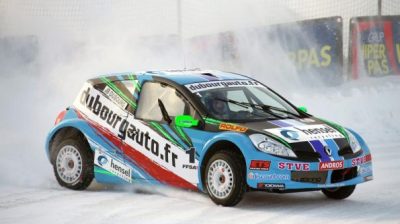
With all the snow and ice kicked up by the tyres of your fellow competitors, you’ll want a rock solid set of wipers to keep the windshield clean. For older cars, this may necessitate a fresh set of blades, as well as a replacement of tired old wiper motors that don’t have the same muscle they used to. Washer nozzles will likely be of little help, as spraying water onto a windscreen in freezing conditions usually just makes things worse.
For those competing at higher levels, sliding sideways around corners is key to shaving seconds off each lap. In such situations, it’s just as important being able to see out of the side windows as it is straight ahead. Top-tier cars competing in the Andros Trophy actually fit wipers to the side windows to maintain good visibility. For those building their ice racer at home, it’s not difficult to imagine some inventive linkages and junkyard parts assembled into a similar arrangement. It could be the competitive edge that nets you the trophy at the end of the day.
Performance and Other Considerations
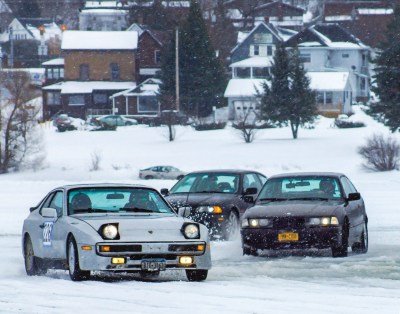
As far as other considerations go, much of what is applicable to other motorsports also makes sense here. Adjustable suspension will allow you to dial in your car to suit the course, and be a big improvement over stock dampers and springs. Being able to adjust ride height higher for bumpier surface conditions will be a huge asset, as well as being able to set things lower if the course permits. Obviously, some proper race engineering is the key here. Getting the car set up right for the circuit will net gains through both improved grip and greater driver confidence. More power can also be a good thing, though only if you’ve got the grip to use it. Top-tier Andros Trophy cars top out at 350 horsepower; any more than that is likely wasted on ice.
Beyond this, often the greatest performance improvement comes from seat time. This can be difficult enough to get in normal motorsport disciplines; ice racing being a winter-only sport makes things even harder. Thus, it’s important to make the most of all practice sessions available in the events you compete in, and take any other opportunities available to learn the requisite driving skills. Many a budding enthusiast earned their stripes doing snownuts in an abandoned parking lot, though obviously local ordnances and law enforcement may not make this an option in your particular locale.
Conclusion
Ice racing can provide huge thrills with a lower bar for entry than many more traditional motorsports, and its strong grassroots focus can make it highly appealing to the beginner. It also teaches driving skills that are of great use in the real world when conditions head south in the winter. Of course, the best time to start building your ice racing car is at the end of winter, giving you the maximum time to prep before next season. If this sounds like the sport for you, it’s time to get going! And, as always, happy wrenching!
0 Commentaires